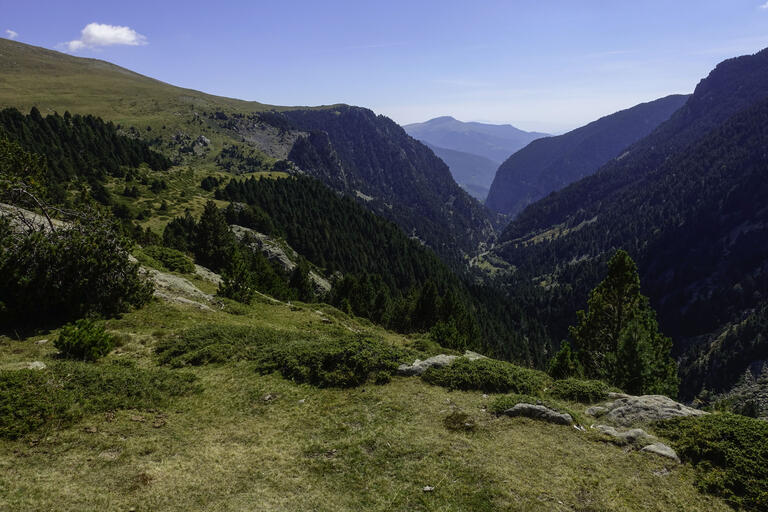
Introduction
The materials that make up the rocky substrate of Núria are among the oldest in the Pyrenees, with radiometric records exceeding 540 million years of age. In the gorges of the Núria River, we find gneiss: a small granitic pluton metamorphosed (transformed by pressures and forces).
These materials, with great hardness and resistance to erosion, are what have caused, due to the action of the Núria River and after the disappearance of the glaciers, the formation of the Núria gorges.
Keep in mind that the relief of the park was shaped by the glaciers of the last glaciation that ended about 10,000 years ago. Above Núria, from Puigmal to Torreneules, the heads of the valleys became glacial cirques from which ice tongues descended. The most important glacier was that of Coma de Vaca and Coma del Freser, which we mentioned at Coll de les Pedrisses. On this side, the glacier that fell onto where the Sanctuary is now was that of Coma d'Eina, Finestrelles, and Les Molleres.
Due to the enormous ice accumulation, the formation of the wide valley and the plain where the sanctuary is currently located originated. Later, the mass of ice was forced to overcome the obstacle of hard rock (gneiss), eroding and wearing it away, forming the gorges.